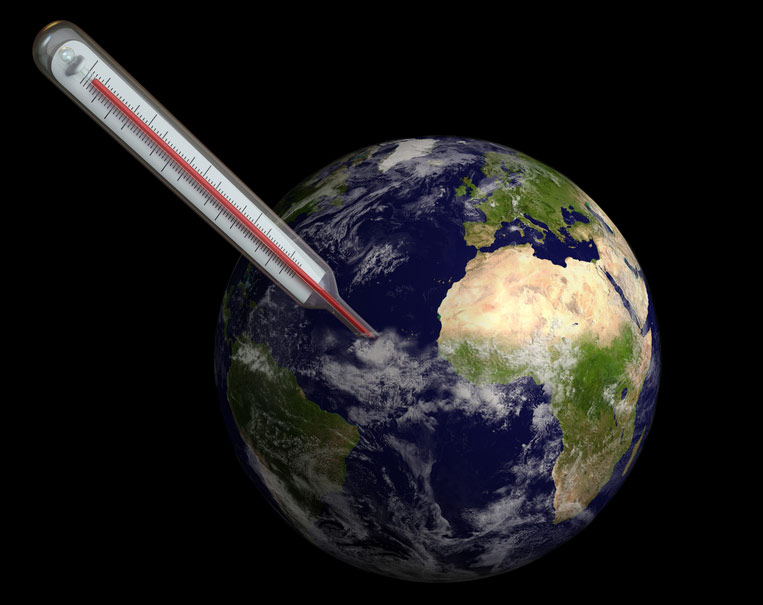
'Overshoot Day' 2015: Earth is Now Officially in the Red

Dave McLaughlin is vice president of the World Wildlife Fund (WWF)'s Sustainable Food program. He contributed this article to Live Science's Expert Voices: Op-Ed & Insights.
Planet Earth is in the red. For the rest of the year, people will be writing checks our planet can't cash.
Today is Earth Overshoot Day: that annual moment when humankind's use of natural resources exceeds the planet's ability to produce and replenish them. Like a gecko that's lost its tail, our planet can heal itself. It can regrow plants, rebuild fish stocks, reabsorb carbon from the air, and return clean water to lakes, rivers and underground aquifers. But these processes take time.
Spending more than we earn
Since the dawn of civilization, the planet replenished its resources faster than humans consumed them. However, according to WWF's Living Planet Report, we eventually crossed an invisible boundary.
Starting around 1970, we began to take more from the planet each year than it could restore. Since then, the gap between our rate of consumption and the planet's rate of regeneration has widened from a crevice to a chasm. The first Earth Overshoot Day fell in late December. This year, it falls on August 13.
Greenhouse gas emissions and food production are leading contributors to overshoot, and with it, climate change. In turn, this has set off a chain reaction: climate change drives extreme weather which contributes to food insecurity, and ultimately, to political and social strife.
Sign up for the Live Science daily newsletter now
Get the world’s most fascinating discoveries delivered straight to your inbox.
Indeed, in 2007 and 2008, wheat shortages in Russia and China drove up food prices in Egypt and other already fragile societies, triggering riots in many and pushing some into revolution. Researchers at the New England Complex Systems Institute identified in a 2011 report more than 30 "food riots" and protests in the wake of food-price spikes in 2008, leading to thousands of deaths. They further warned that chronically high food prices “should lead to persistent and increasing global unrest.”
So what now?
Like climate change, there are two basic strategies to address food insecurity: mitigation and adaptation. On the first front, WWF is working with some of the world's largest food producers, traders, consumer brands and retailers to produce food more efficiently, using less land, water and energy, and releasing less waste and greenhouse gas. We have helped create standards and certification systems for a variety of key commodities, including sugar, palm oil, soy, wild-caught fish and farmed fish. We're also working to develop a similar system for beef. These efforts, among many others, can help us reduce food's environmental impact and roll back Earth Overshoot Day later into the year until we're living within the planet's means again.
Adaptation presents a unique challenge, and we are pursuing novel solutions there as well. In November, WWF will co-host Food Chain Reaction, a simulation and role-playing exercise, in partnership with the Center for American Progress, with game design from CNA and support from Cargill, Inc. and Mars, Inc. Over two days, dozens of policymakers, scientists, food company executives and other stakeholders from around the world will come together in Washington, D.C., to play out a hypothetical food shortage and its side-effects.

The game will be set in 2020 and unfold over the following decade in a world where population growth, rapid urbanization, extreme weather , and political crises combine to threaten global food security. The game's players — representing major food-producing nations, multinational corporations and international organizations — will collaborate, negotiate, make decisions and confront tradeoffs, while dealing with a chain reaction of consequences resulting from their actions.
The players are among those most likely to deal with real-life food shortages over the same timeframe. The game will give them a chance to develop insights that they — and thousands of others involved in producing, distributing, financing and regulating food — can apply in the real world.
We might not know what the next food shortages will look like, but scientific and historical evidence tells us that they will come — and that they will be increasingly severe and prolonged.
We also know that, based on a decades-long trajectory, Earth Overshoot Day will come earlier next year, and earlier still the year after that.
Just as certainly, however, the public and private sectors have the responsibility and capacity to roll back Earth Overshoot Day. And through efforts such as Food Chain Reaction, we can better plan how to respond to food shortages when they inevitably arrive.
Follow all of the Expert Voices issues and debates — and become part of the discussion — on Facebook, Twitter and Google+. The views expressed are those of the author and do not necessarily reflect the views of the publisher. This version of the article was originally published on Live Science.









